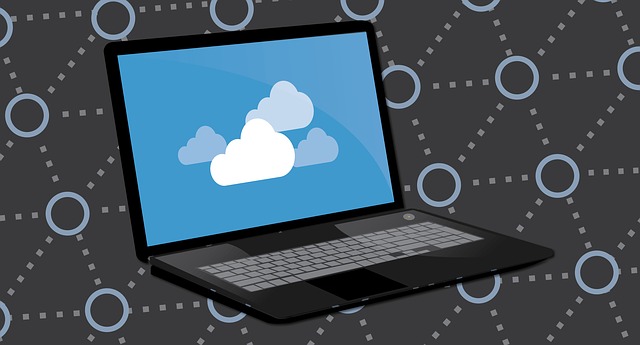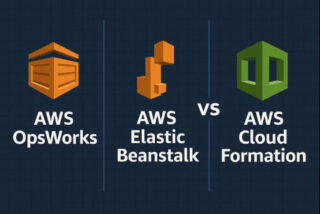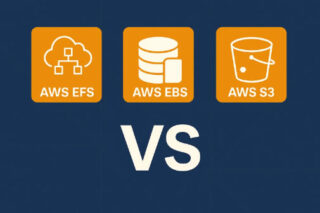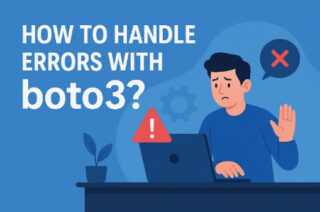Are you trying to find the finest virtual machine (cloud based) operating system? This is the appropriate page if you answered “yes.” A computer’s operating system is an example of a fundamental component that has evolved significantly over time. During the previous few decades, you may have seen the shift from command-based to GUI-based operating systems.
The cloud OS has become more popular in recent years. Because they are small and light, these operating systems take up little space on your computer.

Additional benefits include the ability to access a variety of web-based applications and the storage of your data in the cloud. There are several cloud operating systems available to you as a user. The features and abilities that they give you are based on their virtual environment and framework.
Netvibes
One of the most popular cloud operating systems is Netvibes, which allows users to create, share, and manage digital experiences using a variety of tools and integrations. It includes features such as data visualisation, analytics, and collaboration tools, as well as integrations with popular business software like Salesforce, Google G Suite, and Microsoft Office.
The Netvibes Universe is designed to be a flexible and scalable platform that can be customized to meet the needs of a wide range of users, including businesses, organizations, and individuals.
It incorporates a wide range of sources, such as traditional print media, electronic news sources, social media platforms, mobile applications, and more. In addition, consumers might fall in love with the OS customization feature. In certain cases, there are features that allow you to modify the appearance at any time.
Several web-based applications, word processor presentations, and other features are all available on this OS platform. This platform allows users to save data online for both local and distant use.
Amoeba OS:
The primary goal of this cloud-based operating system is to provide remote access to cloud storage. Cloud OS operations are provided by a network of machines that operate together. Among users, this operating system is well-known for its transparency and performance.
It leverages the most used FLIP network protocol, making this operating system extremely strong and streamlined. The operating system’s policies are set by the users themselves. However, the location of the CPU does not need to be known by the end user.
In the event of remote access, this operating system will not ask you for a login credential. This OS may be shared via a local area network (LAN) without the need for equipment or computers. Amoeba has three layers of process management. Kernel threads that operate on all machines are called process servers. Another process uses an RPC with the process server of a certain computer to provide the essential information for the creation of a process on that system.
Slap OS
SlapOS is an open-source cloud computing platform developed by the company Savoir-faire Linux. It is designed to be a scalable and flexible platform that can be used to build, deploy, and manage cloud-based applications and services. It can be used to build and manage cloud-based infrastructure for businesses, organizations, and individuals.
Using this operating system, you can sell both software and service since it combines resource modelling and grid computing. The Slap OS is built using POSIX-compliant technology. Its OS is even more powerful in terms of performance because of this infrastructure.
Before learning SlapOS, read certain documents that explain the basics. This will help you learn SlapOS before constructing your own using SlapOS master or slapproxy.
Slap OS also has an accounting edition for those who need to keep track of their finances. This is especially relevant for any commercial applications that require high-end processing power..
EyeOS
Known for its file management and application facilities, it is a cloud-based OS. However, there aren’t many alternatives for customising this cloud operating system. In order to access several online apps, you must utilise this cloud OS.
PHP and XML are used in the development of EyeOS. Additionally, it contains Javascript, which improves its speed. This operating system does not allow for social media participation. They can, however, connect files together to store them locally.
Users can access up to 67 programmes in the desktop environment. If a user has an internet connection, EyeOS plans to provide remote access.
CloudMe
Another Web-based operating system, CloudMe comes with a slew of options. Users of this cloud OS can access it with any web browser, making it accessible to everyone. CloudMe is an excellent cloud operating system for independent contractors and small company owners.
This cloud-based operating system makes it easy to share information and distribute tasks. With its real-time access to updates and operational facts, many mainstream organisations are using this cloud OS as well.
During the trial period, you can cancel at any moment and not be billed for the remainder of the period.
In addition to a Cloud File Server, all corporate accounts come with extra accounts for each employee. Each user gets an additional 100 GB of private cloud storage space and access to the shared space included in their account.
OSv
OSv is a cloud-based operating system that is free and open source. Powerful performance and easy file management have made it a popular choice for many businesses. As a hypervisor, it allows you to run any operating system on your computer at any given time.
For example, Linux users may quickly install the Linux operating system. With its simple API, this operating system lends itself to a wider range of virtual machines. OSv, as previously stated, provides an emulation of Linux without the need for Linux to be the primary operating system.
More than one organisation can benefit from this operating system’s ability to easily share data.
Ghost
The term “ghost” refers to a worldwide operating system that is hosted over the internet. It is a user-selectable operating system for the cloud. Individuals and businesses may both use Ghost’s file storing and management features.
This cloud-based operating system is renowned for its security, as well as its functionality and usefulness. Regardless of the device you use, this cloud OS provides personal-level security. This operating system has a simple and straightforward user interface.
Using a USB flash drive, users may also share files and documents instantly.
Corneli OS
Those that utilise it say that it’s a joy to use. It’s a nice product that performs well compared to its peers. Corneli has a lot of extras that make it stand out from the others. It’s simple for users to exchange files, manage files, and do a variety of other tasks.
With this operating system, users may produce and modify text as well as engage in interactive activities such as gaming. When you save data on the cloud, you may access it from any location at any time.
SilveOS
Online operating system SilveOS is based on Microsoft Silverlight. All web-based data and software that can be accessed over the Internet.
Silver light has developed a cloud-based operating system. SIlveOS may be accessed with any web browser that has Silverlight installed. Users of this operating system may take notes, produce documents, play solitaire, listen to music, and perform a plethora of other things.
Files, internet browser, video, and music players are just a few of the pre-installed programmes. The rich text editor credentials of users will also allow them to modify official documents. Personal and business users may both benefit from this operating system.
As a personal computer, it can be used by those who don’t own a computer at all. It’s also possible to save files and data on the internet.
xOS
A Windows-like interface is provided by this model-based operating system. There are a plethora of applications that allow users to manage their data, compose them, personalise them, and more. All users will appreciate how simple it is to use. CORDTM would be incomplete without XOS, which is built around the idea of Everything-as-a-Services (XaaS) (Central Office Re-architected as a Datacenter).
Users may access it mostly using a web browser and a fast internet connection. File management, text editor, note taking, calendar, and more are all included in xOS. Users may enjoy a variety of games, like Canvas Rider and others.
It is possible for a virtual machine to execute a regular operating system with a smaller memory and CPU footprint because of OSv. Memory pools are shared, the application and kernel work together, and scheduling is minimal.
Zero PC
In order to provide a better user experience, this is a web-based solution that utilises cloud technologies. Users may access this web-based operating system for free from whatever web browser they like. Using ZeroPC, you’ll have easy access to all of your cloud files.
Accessing your cloud OS and managing your data on any public computer is also possible with Zero PC, which enables customers to get their whole digital platform in the cloud. It may comprise, for example, a list of their most popular web pages.
A single login is required to access your interface on the operating system. All photographers will find this cloud-based operating system to be the best option. Picasa, Flickr, and several more photo management and editing tools are all included.
LucidLink OS
With the rise of cloud services and object storage, LucidLink’s creators realised outdated technology wouldn’t work in the new paradigm. To fully utilise cloud object storage, a new system was designed. Old technologies becoming “cloud-enabled” didn’t suffice.
Two storage and file system veterans launched LucidLink to transform cloud object storage. The new cloud paradigm needs current, innovative cloud-specific technology. LucidLink Filespaces is a cloud-native file system meant to optimise speed, reduce data movement costs, and improve governance in high-latency situations.
The RSS feed and a variety of games are also available to the public. The OS’s most appealing feature is its ability to support several languages. Several languages are supported by this operating system.
The user interface is straightforward, yet it allows you to handle your files and directories effectively. In addition, you may open any file type and use the required tools online to modify it.
CloudOS
An operating system that runs in the cloud is free to download and use. This operating system may be used with any web browser of your choice. Users of this operating system are able to manage their files and folders in a completely safe manner. In addition, you may easily share your data with others without any problem at all.
In CloudOS, the users’ needs are met entirely by the servers. Most users will be impressed by the interface’s aesthetic appeal. It’s dependable, powerful, and most importantly, it has all of the features you’ve been looking for. A single click is all it takes for users to access documents in their various photo, text, video, and other format varieties.
CloudOS users may also develop apps or manage accounts for a single user or multiple users.
vSTAR
Newly created, this is a cloud-based operating system. This operating system allows users to take use of multi-core speed even if they don’t have the requisite hardware. Even if your current OS couldn’t meet all of your demands, this OS can. Onboard cybersecurity is provided by standard AUTOSAR components. Hardware security modules for automobiles include firewalls and firmware as part of multi-layered cybersecurity.
This operating system’s potential to grow is unrestricted. As an open-source operating system, it works with any hardware or software, including OS. The OS is based on a self-accurate network and may be used on any platform. This means that it won’t notify you if something goes wrong. A message protection layer is also included in this operating system to ensure that your communication is protected from the prying eyes of unauthorised users.
Megha OS
As a learning project, MeghaOS is created entirely from scratch. For MeghaOS, the purpose is to create a platform for experimenting with computers and having fun with them. It provides you with shared storage, apps, and platforms that may be used by a group of people. Megha, on the other hand, is known for its high level of security.
Add-on plugins aren’t required in any way. Due to its capacity to run on less bandwidth, it is more popular with consumers. Users are able to make full use of the service even with a weaker internet connection.
This cloud OS also has a manager account capability. One platform may be used by several people, each of whom can register and log in. In addition, Megha OS makes it easy to share and distribute files.
Zimdesk Cloud OS
Individuals and businesses alike can benefit from this cloud operating system. For web desktops, users and experts agree that it is accurate. It’s one of the oldest cloud operating systems available. Navigating is a breeze with a variety of simple tools.
For example, Zimdesk has apps for email sync, text editing and creation, as well as many more. In the eyes of many users, it’s an excellent choice for a free operating system.
An excellent web desktop for all enterprises, it has a wide variety of document management options.
Mygoya Cloud OS
Similar in many ways to CloudOS, this is a virtual machine operating system for the cloud. In comparison to other operating systems, it offers less capabilities. Users have full access to file management, just as with any of their contemporaries.
Using applications and USB flash drives, you may rapidly exchange files and data between many devices. The user has complete control over where and when they wish to retrieve their stored data. There is no requirement for a high-end computer or software to operate this operating system.
As a side effect, this OS poses less security risk to users. Additionally, the UI of this OS is really simple and lacks a lot of customization choices.
Kohive Cloud OS
An improved online operating system with a wide range of applications is available. Users of this cloud-based operating system will be able to easily connect with one another and exchange their most important papers. This operating system is free to use and may operate on any web browser currently in use.
Among the various apps available to users here are those for managing files and documents, editing and creating text, and much more. If you’ve signed in to any of the OS’s apps, you’ll receive notifications when new activity occurs.
In addition, students, freelancers, and researchers may find it valuable.
Starforce Cloud OS
Cloud-based operating system Starforce is a close second. A desktop-like experience is provided by this operating system. A commercial or public computer may be used to reproduce your whole desktop environment. It is possible for users to view their saved data from any location and at any time.
As a hypervisor, it allows you to run multiple operating systems at the same time. Users don’t have to worry about constantly checking for updates. Many enterprises use Starforce OS as a webtop.
It has the potential to be beneficial to businesses, but the user interface is bare bones.
iSpaces
Linux, Windows, Mac, and Ubuntu users may all use iSpaces because it’s a cloud-based operating system that can run on any of these platforms. One of the features that have made the web more popular is the ability to access it around the clock. In addition, it is designed for many users.
The webtop may be accessed by several users, each of whom can use a separate web browser. Using the built-in browser, you may also visit Google. Most devices can run the operating system, and it doesn’t require any specific hardware requirements.
The UI is straightforward and easy to use for users. This is a free operating system that may be used by anybody on any platform.
Windows4all
This is a general-purpose operating system, as the name implies. Windows-like features abound in this cloud operating system. Your computer will appear to be running a previous version of Windows. Text editors, picture editors, notepads, social network integration, and a slew of other tools are all within easy reach.
Using Windows4all, you have access to a wide range of applications and games for free. In addition, you’ll find music and movie players, so you may relax and unwind wherever you are.
Its file management is very exact, which aids in its adoption as a standard operating system by businesses.
Cloudstack OS
A cloud operating system that is comparable to Apache OS may be found here. Cloud.com and Vcloud were used to construct this operating system. Cloudstack OS is likewise a product of the Apache Soft Foundation.
In addition, because the OS runs on Java, you’ll be able to pull a lot of power out of it. Users may access and manage all of their files at any time and from any location.
Text documents may be created and edited using Cloudstack’s simple applications, which can also be shared and stored in the cloud.
onlineOS
It is a cloud-based operating system that has a wide range of language options. This indicates that the operating system may be accessed by users in a variety of languages. The desktop interface is reminiscent of the old days of Windows, and it’s easy to see why.
With its JavaScript code, it will run smoothly on any computer or mobile device. You can only use this operating system if you have a strong internet connection.
With file management, organisations can manage all of their information in the cloud with precision.
How can I help you? (FAQs)
What is the best platform for virtual systems on the cloud?
You can use any of the cloud OSes listed above for a virtual solution. They’ve been vetted by experts and come with a guarantee. However, Netvibes, Amoeba OS, Slap OS, EyeOS, and CloudMe are the top five names.
2. Which of these operating systems is most suited to cloud computing?
Two of the most ideal operating systems for cloud computing are Cloudstack OS and CloudMe. These two operating systems include a wide range of capabilities that make it easy to run virtual machines.
Is there an other term for a cloud operating system?
There are several different names for Cloud OS, which is a type of operating system. One of the most common names for it is “virtual operating system”. It’s also known as a cloud-based operating system.
A: Yes, it’s possible to utilise OS on the cloud.
Yes! There are now cloud-optimized operating systems out there. It is true that all of the above are cloud-based operating systems. A variety of web-based applications may be run on virtual machines using these operating systems.
When it comes to computing, how can a cloud OS affect the definition?
The Cloud OS is the operating system of the future for the computer industry. When running on your virtual machines, it doesn’t need any disc space or RAM. This will lead to PCs with AR and VR in the near future. The power of a remote server may also be used to access web-based programmes. Using a cloud OS, you can access a computer from any location where you are.
When compared to traditional operating systems, how are cloud operating systems different?
When compared to a regular operating system, the cloud OS is more extensible. This is what distinguishes them. When the operating system expands, you don’t need to replace your hard drives or bring along more storage. Cloud OS has the same features as a traditional operating system, but its databases are stored in the cloud.
In the context of cloud operating systems, what is the most pressing issue?
There’s no denying that cloud operating systems are the best of the best. However, most people are concerned about the security of their devices. It’s difficult for certain people to exchange their information with a third-party operating system since cloud-based operating systems save all of their data on the cloud.
Conclusion
In order to keep things simple, here are the top 23 cloud operating systems suggested by experts. For personal and business usage, you can now simply choose among the top 23 best cloud operating systems. If you have any additional ideas, please share them with the rest of the audience in the box below. Keep sharing this editorial to get more reviews like this one in the future.


